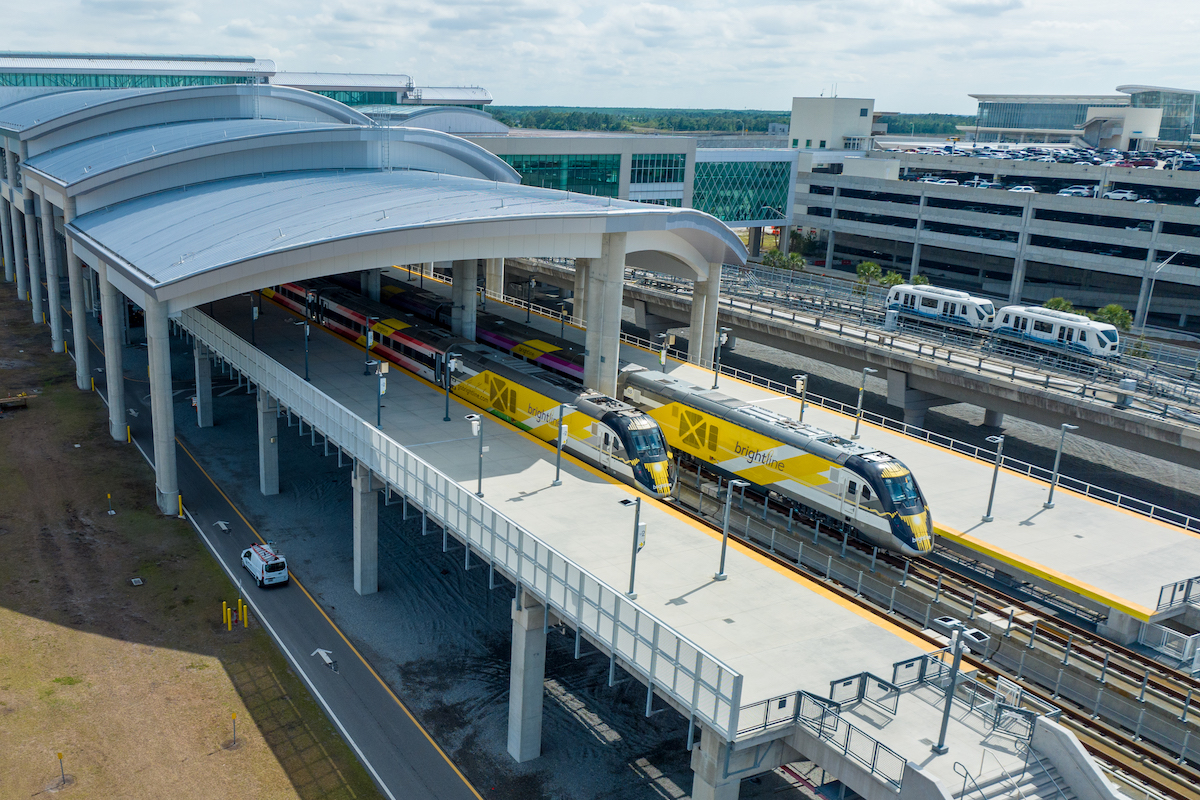Brightline Opens $6 Billion Florida Rail Line, Sets Sights on Las Vegas

Skift Take
Speeding through central Florida's flat scrubland east of Orlando is America's next big passenger train.
That scrubland is where Brightline trains begin carrying passengers between Miami and Orlando on Friday. The 235-mile trip, which is roughly the distance between New York and Washington, D.C., takes as little as 3 hours and 15 minutes in trains running at up to 125 miles per hour — higher-speed but not high-speed rail by global standards — and with no risk of traffic jams. Fares between the cities start as low as $79 one way for adults.
“We believe this is the blueprint for intercity passenger rail around the country," Brightline President Patrick Goddard said. "We’ve said that many times but now the evidence is there.”
The $6 billion rail line is the first newly built private intercity passenger rail service in the U.S. since before the formation of Amtrak some 50 years ago. And it comes in one of the country's bastions of car culture: Florida.
"It was almost a moon landing in 2018" when Brightline's South Florida line opened, Rail Passengers Association CEO Jim Mathews said.
The U.S., simply put, has not invested in intercity passenger rail — whether publicly or privately — in a meaningful way in decades. The infrastructure used by Amtrak's Northeast Corridor, the busiest in the country, is more than a hundred years old and critical choke points, like the tunnels under the Hudson River between New York and New Jersey, are only now — in 2023 — getting significant federal dollars for renewal and expansion. Those funds come from the Bipartisan Infrastructure Law that President Biden signed in 2021.
At the same time, China has spent tens-of-billions of dollars building out the world's largest high-speed rail network. And long-time rail leaders like France, Germany, and Japan continue to invest and expand their networks.
https://youtu.be/viDnV4xd3Jc?si=1vLC3J1Q_m3DGxP2 A Brightline train on a 125 miles-per-hour test run in central Florida. (Brightline)“The U.S. is, quite possibly, the most single attractive rail market in the world that doesn't really have much of a rail market other than the Northeast Corridor today," Fortress Investment co-founder and Principal Wes Edens said during a Washington Post Live event last year. "Given the dimensions of the country, the economic prosperity, it's a very compelling opportunity for folks."
Fortress owns B
